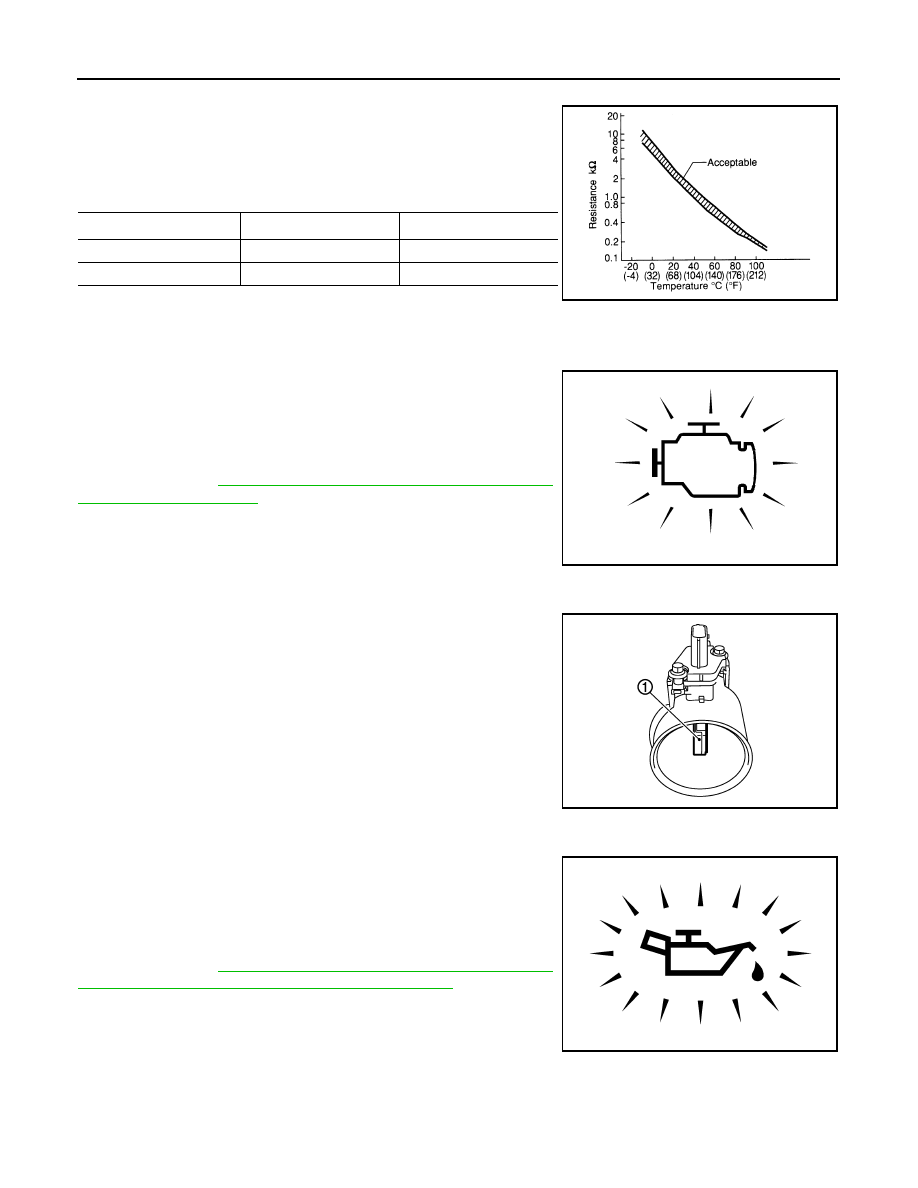Nissan Versa Note. Manual - part 261

EC-26
< SYSTEM DESCRIPTION >
[HR16DE]
COMPONENT PARTS
BATTERY TEMPERATURE SENSOR
Battery temperature sensor is integrated in battery current sensor.
The sensor measures temperature around the battery.
The electrical resistance of the thermistor decreases as temperature
increases.
<Reference data>
*: These data are reference values and are measured between battery temperature
sensor signal terminal and sensor ground.
Malfunction Indicator Lamp (MIL)
INFOID:0000000009020596
The MIL is located on the combination meter.
The MIL will illuminate when the ignition switch is turned ON without
the engine running. This is a bulb check.
When the engine is started, the MIL should turn OFF. If MIL remains
ON or continues blinking, the on board diagnostic system detects a
DTC(s) that affects exhaust gas.
For details, refer to
EC-57, "DIAGNOSIS DESCRIPTION : Malfunc-
.
Mass Air Flow Sensor
INFOID:0000000009020597
The mass air flow sensor (1) is placed in the stream of intake air. It
measures the intake flow rate by measuring a part of the entire
intake flow. The mass air flow sensor controls the temperature of the
hot wire to a certain amount. The heat generated by the hot wire is
reduced as the intake air flows around it. The more air, the greater
the heat loss.
Therefore, the electric current supplied to hot wire is changed to
maintain the temperature of the hot wire as air flow increases. The
ECM detects the air flow by means of this current change.
Oil Pressure Warning Lamp
INFOID:0000000009020598
Oil pressure warning lamp is located on the combination meter.
It indicates the low pressure of the engine oil and the malfunction of
the engine oil pressure system.
Combination meter turns the oil pressure warning lamp ON/OFF
according to the oil pressure warning lamp signal received from
ECM via CAN communication.
For details, refer to
EC-43, "ENGINE PROTECTION CONTROL AT
LOW ENGINE OIL PRESSURE : System Description"
Temperature [
°C (°F)]
Voltage
*
(V)
Resistance (k
Ω)
25 (77)
3.333
1.9 - 2.1
90 (194)
0.969
0.222 - 0.258
SEF012P
SAT652J
PBIA9559J
PBIA8559J